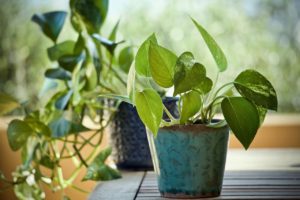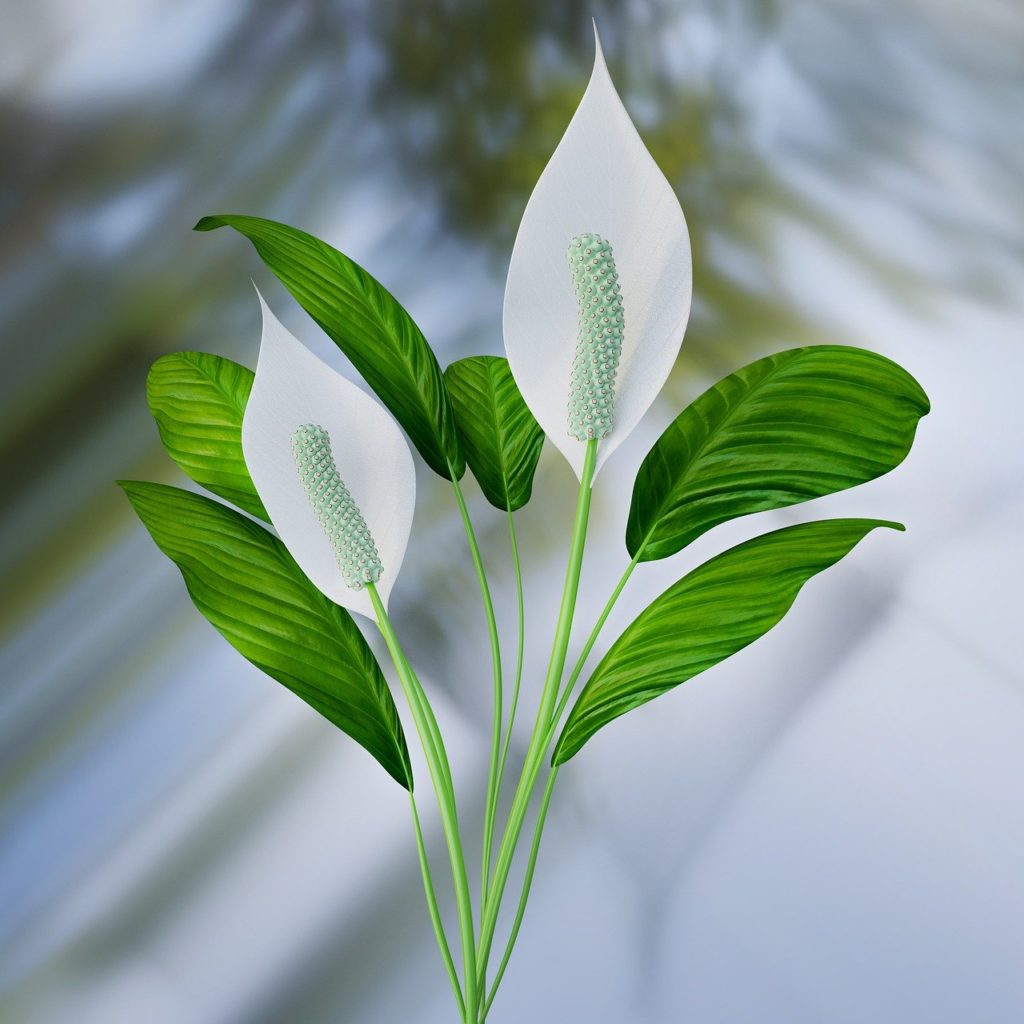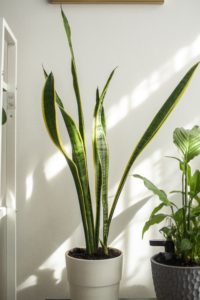Top 10 Air Purifying Plants
Discover the most useful plants and how they work to purify the air and eliminate toxins. Uncover the top 10 air purifying plants in this report that will certainly help you by using them to your advantage.
Introduction
If you’re like most people, you worry about the quality of the air you’re breathing. There’s just so much pollution nowadays, from factories and industries, vehicles, and second-hand smoke.
And it’s not just outside, either.
Inside, you’re exposed to that same air, plus whatever toxic chemicals happen to be in your cleaning products or the paint on your walls. There are also hundreds of microorganisms living in your house.
NASA produced a report on “Interior Landscape Plants for Indoor Air Pollution Abatement.” This study looked at various plants, plus a carbon filter to see whether the plants could absorb and purify toxins and microorganisms from indoor air.
Based on this report and other sources of proven research, we’ve compiled a list of the top indoor plants that can help purify your home’s air and protect you and your family from toxins and microorganisms.
Best of all, many of these are very easy to grow and maintain, so even if you aren’t a green-thumb, you can have clean air inside your home.
One thing to keep in mind, though. These are live plants, so they’ll need care and attention. If you overwater, you might end up with mold or other fungus that will make the air worse instead of better.
Be sure to follow directions and care for your plants appropriately, so they’ll thrive and help remove all those toxins from your air.
In this special report, we’ll uncover at the top indoor plants that will purify the air you breathe, as well as how to care for them.
We’ll also cover which toxins are most likely to be absorbed by each particular plant so you better understand how each variety goes to work in helping clean the air.
If you follow our directions and put a little work into caring for these plants, you’ll have a lovely, green home with a superior air supply.
Let’s begin!
Purifying Plant #1: Pothos
Houseplants are a valuable addition to any room. They bring a vibrant beauty inside and create a natural oasis inside your home. They liven up a dull corner or window. The right plant can be a fantastic accent piece, whether it’s a hanging fern or a tall palm tree. And of course, they help create fresher air for you and your family.
One of these wonderful plants is known as Pothos (otherwise known as Golden Pothos or Devil’s Ivy).
Pothos is one of the easiest houseplants to keep alive. It’s a tropical plant, so it likes the warmth of an indoor setting. It’s a trailing vine with heart-shaped leaves and can grow up to six to ten feet in length.
Pothos will tolerate low light and humidity, so it’s pretty easy to satisfy this plant and maintain it. However, for a healthier growth, give it bright (but not direct) sunlight and allow the soil to dry out between waterings.
In addition, you’ll want to choose a well-draining potting soil. If your Pothos has pale leaves, it’s probably getting too much sun, whereas if you start to notice the appearance of differently colored zones within the leaves, it means it’s getting too little.
If it starts getting a little leggy, just prune it back to shape it and control the length.
Note: Pothos and philodendron plants are often confused. Pothos stems are grooved, while philodendron stems aren’t. New philodendron leaves have a sheath that dries and falls off; pothos doesn’t have this sheath.
Pothos also like brighter light and warmer temperatures than philodendrons. You’ll often see pothos sold in hanging baskets.
Tip: They aren’t heavy feeders, so fertilize monthly to bi-monthly during the growing season.
Because it removes toxins like formaldehyde and benzene, commonly found in fresh paint, you often see this plant in offices or living rooms. However, it also absorbs carbon monoxide, so it’s a good choice for a bedroom as well.
And Pothos also absorbs xylene and trichloroethylene.
Word of Caution: This plant causes oral irritation and difficulty swallowing in pets, so make sure your dog or cat doesn’t chew on the leaves or stems.
Purifying Plant #2: Dwarf Date Palm
The pygmy date palm is a member of family Arecacea, an enormous group with over 2,600 species growing in tropical and sub-tropical zones of the world.
This particular type is called the date palm because the small yellow flowers on the female trees give way to purplish dates once fertilized.
Palms have numerous graceful arching frond-like leaves that branch directly from the trunk and the dwarf or pygmy variety can reach a height of six to ten feet.
In the wild (Southeast Asia and Africa), they grow in the dense underbrush along riverbanks, in full sun to partial shade. They don’t like a whole lot of direct sunlight, but a little will be all it needs.
Tip: Try a south- or east-facing window.
Your palm will want plenty of water so plant it in sandy, well-drained soil and keep a regular watering schedule.
Further, Date palms prefer temperatures above 50 degrees F (up to 75 degrees) so keep them away from cold drafts during Winter.
It’s easy to keep a pygmy palm tree pruned, too – just snip off the dry or damaged fronds at the trunk. They’re slow growers, so have patience and you’ll have a full-sized tree in no time.
However, if you see chlorotic or spotted fronds, your palm likely needs a good dose of magnesium or potassium. Feed your palm with a slow-release granular fertilizer only while it’s actively growing.
Palm trees remove xylene and formaldehyde, so they’re good for a freshly painted or refurbished room, an office or living room!
Purifying Plant #3: Peace Lily
Peace lilies are easy, undemanding plants for any indoor space, though there’s a trick to getting them to flower.
Standing one to four feet tall, their dark green leaves provide a lovely background for the white flowers. They grow on the forest floor in the tropics, where they get dappled sunlight and plenty of moisture. They aren’t actually lilies, though. They’re perennial plants, which means that with proper care, they’ll live for years.
They grow up to about 16 inches tall, though larger outdoor varieties can reach six feet.
Your peace lily will want bright, indirect light to grow best, and you should keep the soil consistently moist, but not soggy.
Make sure there are no drafts, because these are tropical plants that don’t do well in cool temperatures. Provide your lily with a protected area away from drafty windows or doors. If you provide the proper environment, your lily should bloom over and over for years.
Peace lilies aren’t heavy feeders, so starting in late Winter, fertilize every six weeks or so with a good all-purpose plant food during Spring and Summer.
Toxins removed by this plant include benzene, carbon monoxide, formaldehyde, trichloroethylene, and xylene.
A warning however: Peace Lily leaves contain a compound that causes swelling of the tongue or vomiting when eaten, so keep your plants away from children and pets.
Purifying Plant #4: Philodendron
Philodendron is another vine with heart-shaped leaves. It’s an incredibly simple houseplant to grow, and even an inexperienced gardener can have a thriving Philo if they watch for the plant’s signals and give it what it needs.
Your philodendron can thrive living indoors year-round, but it does appreciate being taken outdoors occasionally to a warm, shady location where you can flush the roots with fresh water and wipe off the leaves.
They prefer bright, indirect sunlight so make sure the sun doesn’t actually touch the foliage. If you’re getting yellow leaves, your plant may be getting too much sunlight.
Allow the top inch of soil to dry out between waterings. Droopy leaves mean the plant’s not happy with your watering schedule, so either ease off or water more.
Slow growth and small leaf size means your plant’s not getting some needed nutrients and may benefit from a fertilizer. Pale new leaves may indicate a lack of calcium or magnesium.
Fertilize monthly during Spring and Summer, and every six to eight weeks during Fall and Winter.
Philodendron comes in vining and non-vining varieties, so pick which type you’d best like to have in the house.
Philodendrons remove formaldehyde from the air, so they are another plant that’s good with a freshly painted or refurbished room or office.
Eating this plant can burn the mouths of your pets and cause excess salivation and trouble swallowing. Make sure they’re out of reach of the dog or cat.
Purifying Plant #5: Spider Plant
The spider plant is probably one of the most adaptable houseplants and it can thrive in a wide variety of conditions with few problems other than brown tips. It’s the perfect plant for an inexperienced gardener.
They like bright, indirect sunlight and well-drained soil. They like the soil to dry out a bit between waterings. They also like cooler temperatures (55 to 65 degrees F).
They are called spider plants because of the little “spiderettes” that dangle out of the mother plant like spiders on a web. These spiderettes often begin as small white flowers. The plant also enjoys being semi-root bound, so don’t repot until the large fleshy roots are visible and watering is harder.
Your spider plant will also appreciate the occasional pruning back to the base of the plant.
If you do see brown tips on the leaves, that’s likely because of excess fluoride in the soil from tap water. Try switching to distilled or even rainwater.
Fertilize once a month during spring and summer, and not at all throughout the fall and winter.
Spider plants remove formaldehyde and xylene from the air, so keep them in your freshly painted or refurbished room or office.
Your cat will be wildly attracted to the dangling spiderettes, but this plant contains a compound related to opium, which can cause stomach upset, vomiting and diarrhea. Keep your spider plants up away from the pets (a hanging basket works wonderfully).
Purifying Plant #6: Chrysanthemums
While not a typical houseplant, the mum can be grown indoors with a little bit of care. They’re more challenging to grow, but if you’re up to the work, they can be a beautiful addition to your indoor garden.
Mums enjoy good air flow, bright indirect sunlight, and watering with only warm water. Make sure you allow the soil to dry out completely between waterings. They like well-drained potting soil.
The trick to encouraging flowers is to shorten the length of time they’re in the light. If you reduce the amount of light to under ten hours a day, they should begin producing those lovely colorful flowers for you.
Remember that direct sunlight is harmful to a mum and keep them in an area of filtered light.
It’s also important to provide nitrogen and potassium to your mums during their vegetative phase. Feed before the flower buds start forming to produce healthy roots and buds. Feed them monthly until they begin to bud, then stop for the fall and winter.
Mums are known as one of the best air purifiers around. They remove ammonia, benzene, formaldehyde and xylene from the air.
Keep them in any room that offers indirect sunlight.
Word of Caution: These plants are toxic to cats and dogs (and horses), so keep them out of reach of your pets.
Signs of ingestion include vomiting, diarrhea, loss of coordination, and dermatitis.
Purifying Plant #7: Rubber Plant
Rubber plants can be enjoyed either as a medium-sized houseplant or a beautiful indoor tree. If you have the patience, start with a small plant as those acclimatize better to indoor life than older specimens do.
They can grow to impressive heights within a few years, especially if you put their pot outside during the hot summer months. If you want a smaller plant, just buy a smaller pot.
Rubber plants don’t like sitting in water, so a well-drained, well-aeriated soil is essential. They also like a lot of bright but indirect sunlight and do well if you grow them behind a sheer curtain.
If your plant starts getting leggy with lusterless leaves, it’s not getting enough sun. Their watering needs vary with the seasons. In summer (growing season), your rubber plant likes a lot of water so keep it moist. This includes wiping or misting the leaves with water.
During winter, your plant may only need watering once or twice a month, though you’ll want to keep misting the leaves because of the dry heated air.
Droopy leaves mean the plant needs water, while yellow or brown leaves that drop mean too much water. Try watering with lukewarm water that’s been sitting out so the chlorine will evaporate.
And finally, fertilize your rubber plants only during the growing season.
Rubber plants can remove xylene, formaldehyde, benzene, and trichloroethylene from your home’s air. They do well in an office or living room – or just about any freshly painted or refurbished room.
Purifying Plant #8: Boston Fern
Popular since the Victorian era, Boston ferns are now one of the most common houseplants in the world. This easy-to-grow fern is known for its sword shaped fronds and are perfect for growing in a hanging basket.
They like lots of indirect light – morning light is perfect; full afternoon sun can actually burn the fronds. Place them near a window, but not in direct light.
Boston ferns thrive in humid climates and need consistent moisture. Keep your ferns happy with moist (not soggy) soil and regular misting.
One good way to tell is to heft the pot. If it feels light, it probably needs watering.
Keep your fern away from drafts or heating vents. In the winter, cut back the fronds to around two inches to help them grow and regenerate in the warmer months.
You don’t need to prune them otherwise unless the fronds are drying up and dropping leaves.
Fertilize once a month during Spring and Summer, then no feeding during Fall and Winter for the dormant season.
Ferns remove formaldehyde and xylene from the air, so they’re good for almost any room, especially one that’s freshly painted or refurbished.
They’ll do well in an office too, so long as you keep them moist.
Purifying Plant #9: Areca Palm
If you want to add a little tropical vibe to your room, there’s nothing that beats a palm tree. You can spot these trees almost everywhere, from offices to shopping malls.
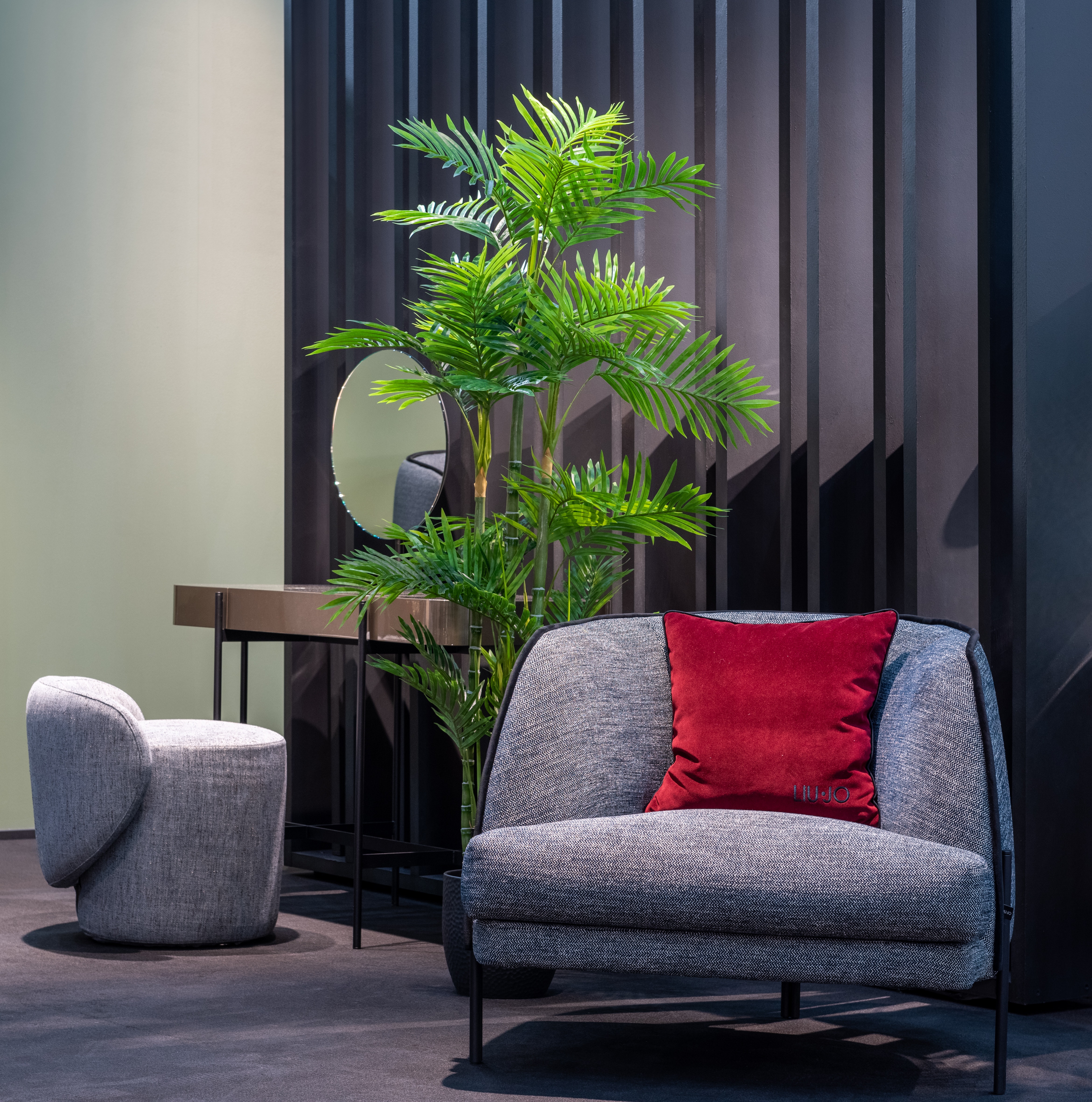
They’re originally from Madagascar, so you can probably figure out they’ll like bright light. But make sure it’s indirect because direct sunlight can burn their leaves.
Palms prefer temperatures between 60 to 75 degrees F, so keep them away from chilly drafts or sudden temperature drops.
If you see brown spots on the leaves, it’s either gotten too cold or the air is way too dry.
These trees can grow to six to ten feet tall and are a vibrant accent to any room of the house.
The easiest way to accidentally kill your palm is to overwater without providing adequate drainage. Plant in well-draining soil in a pot with drainage holes and allow the top of the soil to dry out between waterings.
During the winter, water less often. The areca palm grows slowly and prefers to be somewhat root-bound. It shouldn’t require repotting more than every two to three years. Fertilize your palm with a time-released fertilizer during spring, so it will last all growing season.
Toxins removed include benzene, carbon monoxide, formaldehyde, trichloroethylene, and xylene.
You can put an Areca palm in any room, and it will purify the air, but they’re especially good in freshly painted or refurbished rooms. These plants are non-toxic to pets, according to the ASPCA.
Purifying Plant #10: Dracaena
This easy-to-care-for houseplant has colorful strap-like foliage on a stem called a cane. You can prune the cane back at about any point to keep the plant under control.
The plant comes in large tree-like varieties which may reach up to six to fifteen feet tall, or in smaller cultivars. Pruning will produce fresh foliage right below the cut within a few weeks.
Dracaena loves indirect sunlight – do not, under any circumstances, put your plant in direct light. A spot behind a sheer curtain near a sunny window is perfect.
Water once a week, keeping the soil moist but not soggy. Droopy or yellowing leaves mean overwatering or poor drainage. Be sure you have a well-draining soil mix and a pot with drainage holes.
Your dracaena will thrive in temperatures between 60 to 70 degrees F during the day and about 10 degrees cooler at night, though it’s able to withstand warmer or cooler temperatures if necessary. Just don’t let it get too cold.
Feed with a good fertilizer every two weeks during spring and summer, but drop back to once a month during Fall. Stop fertilizing when winter arrives to give the dracaena a good dormant period.
Dracaena removes xylene, formaldehyde and trichloroethylene from your air supply, so it’s a good plant for any room, especially one that’s been freshly painted or refurbished. They also make good office plants.
This plant contains compounds called saponins, which can cause vomiting, excessive drooling, and other symptoms in pets. In cats, it can also cause dilated pupils.
Make sure your pets don’t chew or eat the leaves.
Bonus Tips
There are two other plants that you’ll want to consider if you’re interested in boosting the quality of the air in your home.
They are: Ficus and the Snake Plant.
Here’s a bit of information about each and why you should consider them:
Ficus: (Weeping Fig)
Ficus trees are common houseplants in the home or office, mainly because they look more like a typical tree, with one trunk and leafy branches. You may also have seen them with braided trunks.
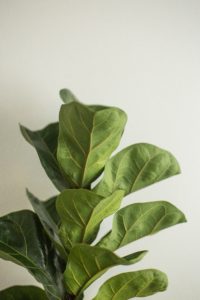
These plants are a little finicky, but with a little work, you can keep your Ficus happy and healthy. They’re native to Southeast Asia, and can grow anywhere from two to ten feet tall.
Your Ficus will appreciate bright indirect or filtered sunlight and a weekly watering, with the soil allowed to dry out between waterings. Variegated varieties can tolerate medium sunlight, but bright direct light can result in leaf scald and leaf loss.
Ficus trees cannot tolerate cold temperatures. Keep them in a temperature over 60 degrees F – and over 70 degrees is even better.
Place your tree in a protected area of the room where it’s safe from drafts. Regular misting will keep your Ficus healthy, or you can place the pot on a pebble-lined tray full of water.
Remember to let the soil dry out in between watering, though, because they don’t like overly wet roots. They’re also rapid growing plants, so you should fertilize once a month in spring and summer and once every two months in fall and winter.
One thing you’ll notice about your ficus is that any change or disturbance will cause leaf drop. If your tree is losing leaves, check the water first (for over- or under-watering), then check for low humidity or low sunlight.
Tip: Make sure there hasn’t been a change in temperature, like a draft or the plant getting too hot or too cold. Even moving the plant or repotting can cause leaf drop. Fertilize once a month during growing season (Spring and Summer).
Ficus trees remove formaldehyde, benzene, and trichloroethylene from the air, so they will purify any room in the house. Try them in a freshly painted or refurbished room or office as well.
Low-maintenance snake plants are perfect for the person who can’t keep any plant alive. With striking dark green striped leaves, they’ve become quite a popular houseplant. They’re hardy succulents that can grow up to six feet tall.
Your snake plant should have dark green leaves – pale leaves mean the plant’s not healthy, so don’t buy that one.
Choose a pot that is porous in texture and a well-draining potting mix. They’re prone to rot, so a soil-less mix is great.
Snake plants thrive when you almost forget about them! Let the potting mix dry out between waterings and be sure not to over-water during winter when they’re dormant. Further, try to keep from wetting the leaves when you water, too.
Snake plants like bright indirect light for a couple of hours a day, though they’ll tolerate almost anything. Fertilize them with an all-purpose plant food during growing season and leave them alone in cooler months.
Snake plants can remove benzene, formaldehyde, trichloroethylene, and xylene from the air, so they’re good anywhere in the house.
They’re especially useful in freshly painted or refurbished rooms or offices. They are toxic to pets, though, and can cause nausea, vomiting, and diarrhea, so keep them out of reach.
Conclusion
All the plants featured in this special report help to purify the quality of the air in your home, but in closing, we’ll leave you with a few final tips:
First, choose the right container. It’s important to consider what your plant prefers in the way of water retention. A porous, clay pot is best for plants that don’t like having their roots wet, while a plastic or ceramic pot will work for a water-loving plant.
Match your houseplant with the right light conditions, as well, keeping in mind that they vary in their requirements. Some plants like the strong light found next to a south-facing window, while others prefer the soft morning light of an east-facing window.
The distance from that window will also affect the quality of light, as will the season. All houseplants do best with some natural light, but some need less than others. Too much light usually turns the foliage dull green to yellowish. The leaves may also wilt.
If your plant isn’t getting enough light, it may become leggy and less compact. Check the growing directions on your houseplant before you decide where to place it in your home. The better you match the plant with the recommended light condition, the more it will thrive.
Use a high-quality potting soil or mix. Never use regular garden soil for your houseplants because it can contain harmful microorganisms or pests you don’t want inside. A good soil encourages healthy roots by providing the right balance of proper aeration, nutrition, and water retention. You can purchase high-quality potting soil at almost any nursery or gardening center.
And finally, you want to be sure you water your plants properly. Your houseplants won’t be exposed to natural precipitation, so you’ll need to water them more often. Wet the entire root ball and let the excess water run out the bottom of the pot.
Never leave standing water in the catch-tray for more than a day or so because it promotes root disease. Most plants prefer that you allow the soil to dry out between waterings.
To check soil moisture, stich your finger into the top two inches of soil. If it feels dry, it’s probably time to water. You can also check how dry the plant is by lifting the pot. A dry plant will be noticeably lighter than a well-watered one.
To prevent salts from building up in the soil, water especially heavily once every month or two. That means refilling the container four or five times, so you’ll probably want to put the pot in the sink or take it outside on a warm day.
The frequent watering required by most houseplants leaches nutrients from the soil, so you must replace these by regular “feeding” or fertilization. A good all-purpose plant food will work fine, though you may also find one specific for the type of plant you’ve chosen.
We hope you’ve enjoyed this special report and with you the absolute best.
Cheers to cleaner air!
LEGAL DISCLAIMER:
The author/publisher/ reseller assumes no responsibility for errors, omissions, or contrary interpretation of the subject matter herein and does not warrant or represent at any time that the contents within are accurate due to the rapidly changing nature of the internet. Any perceived slights of specific persons, peoples, or organizations are unintentional.
The purpose of this report is to educate, and there are no guarantees of income, sales, or results implied. The publisher/author/reseller can, therefore, not be held accountable for any poor results you may attain when implementing the techniques or when following any guidelines set out for you in this report.
Any product, website, and company names mentioned in this report are the trademarks or copyright properties of their respective owners. The author / publisher / reseller are not associated or affiliated with them in any way. Nor does the referred product, website, and company names sponsor, endorse, or approve this product.
DISCLOSURE:
Unless otherwise expressly stated, you should assume that the links contained in this report may be affiliate links, and either the author/publisher/reseller will earn a commission if you click on them and buy the product/service mentioned in this report. However, the author/publisher/reseller disclaims any liability that may result from your involvement with any such websites/products. You should perform due diligence before buying the mentioned products or services.

